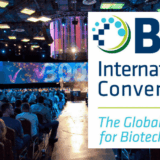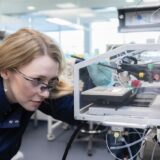The UK life sciences sector is vibrant. It is alive and well. The UK has an immense legacy in this space. A legacy of being a pioneer; of being a global provider of innovation; of knowledge; of wisdom, and of industrial process.
25% of the world’s top 100 selling medicines were discovered in the UK through a combination of science, people, and money. That special combination is a necessity for life sciences anywhere in the world. It’s not a unique combination, but one that the UK can bring together in a very special way if it chooses to do so.
One third of Europe’s money in the life sciences is raised here. We have 250,000 people directly employed in the industrial side. We have hundreds of millions going into infrastructure, NIHR, the BRC, the AHSNs, UK Bio Bank, the Bio Resource, the Bio Centre… the list could go on.
We have 300 drug discovery biotech’s in this country supported by 1,200 service and supply companies and consultants. We have an immensely rich infrastructure, and that’s added to, by over 150 medical research charities. That combination is unique.
However, we shouldn’t just congratulate ourselves on how smart we are, or how rich we are, or how many of these things we have. The complexity and depth of what we have can be some of our problem. The national Life Sciences Industrial Strategy therefore seeks to harness them. One of the previously unharnessed horses in this chariot race has been the 60 million patients of the NHS.
We hear a lot in the industry about being patient-centred, but we need to make sure that’s more than just a marketing line. We need to make sure that patient-centred treatments, and interventions come from evidence of what patients need, not rely solely on scientific eminence.
We are all going to be patients one day. Patient power is the fuel of the next round of medicines discovery development of therapeutic intervention.
We can engage different parts of our community – the science sector, the academic sector, the patient power: the national infrastructure. We shall use the Industrial Strategy as a guide to try and focus ourselves, to team ourselves up so that we are all pointing in the same direction which will enable, by its very focus, the flow of assets, the attraction of money and the capture of that value back into our system. Because, whilst we have discovered 25% of the world’s top 100 selling medicines, we did not capture the value of 25% of the top 100 selling medicines, if we did, we would all be in a very different place.
This article was originally an introduction by our CEO, Chris Molloy, when he chaired the Westminster Health Forum in late 2019.
About the author
Chris Molloy has a 30-year international board and executive career across a unique range of life sciences R&D disciplines.
Chris began in preclinical science and research management at Glaxo, where he was closely involved with the industrialisation of high throughput discovery, combining robotics, informatics and manufacturing theory. He moved to Asia as COO of MerLion Pharmaceuticals, a Singaporean natural products biotech that was developed into an award-winning multinational anti-infectives R&D company. Chris then ran corporate development for the global informatics firm, idbs – now part of the Danaher group. During Chris’ tenure idbs won a Queens Award for Enterprise, was a Fast-track 100 company, and the first UK firm to develop a stratified medicine software platform using real-world health data [co-investing alongside the Technology Strategy Board (now Innovate UK)].



















































































































